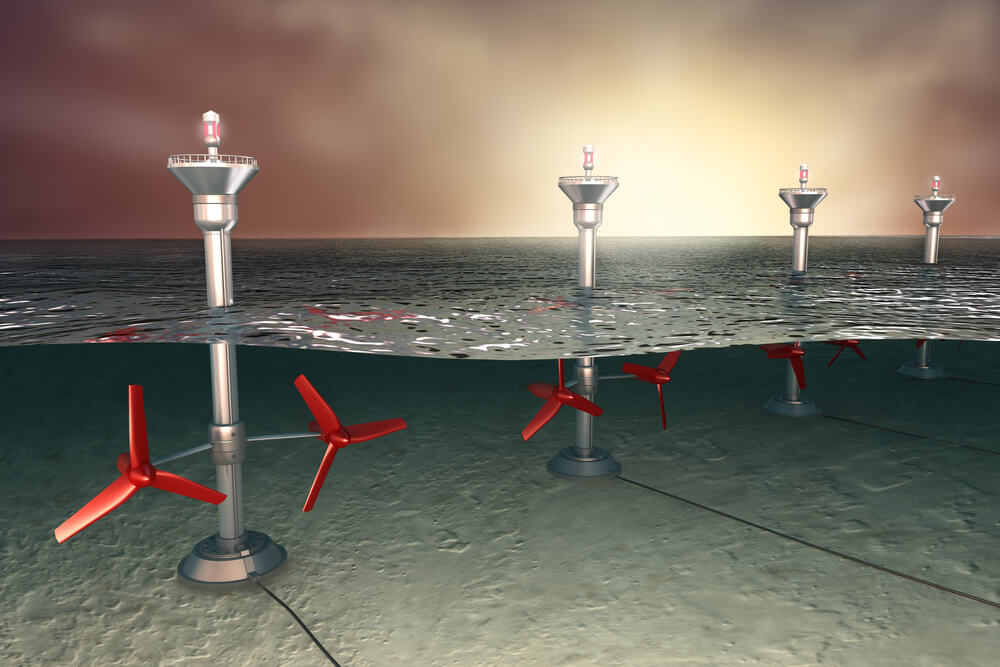Why we're seeing a rise in tidal energy jobs
In the family of renewable energy sources, wind is the golden child and accounts for a large share of green energy production. But let’s not forget that there is a lesser-known renewable energy source that hasn’t yet had its time in the limelight – tidal.
Tidal energy has the potential to provide 20% of the UK’s energy demand, yet it’s currently one of the most underappreciated renewable energy sources. All that is changing as new stories surface, detailing innovative ways the ocean tides are being harnessed. Take the recent announcement that tidal energy was being used to power electric vehicles on the island of Yell in Shetland.
Want to know more about this renewable and why we’re seeing a rise in tidal energy jobs?
There is a pressing need to address climate change
It’s been eight years since the last assessment of the science behind global warming, but scientists have returned to the facts, and their Climate Change 2021 report is labelled a ‘code red for humanity’. Now is the time to act and look at how we can reduce our carbon emissions by investing more in green energy.
The first commercial-scale tidal power station, SeaGen, was constructed in Northern Ireland in 2007, consisting of just two 600kW turbines. Compare this to the largest tidal power plant, located on Lake Sihwa in South Korea, which has a capacity of 254 MW.
Evidently, tidal energy plants have come a long way in the last decade or so, and while they’re renowned for needing large capital investments, with an asset life of 120 years, they pay their way over time.
As more tidal projects surface on the renewable energy market, this will create a swell in the number of renewable energy jobs, making tidal energy a great option for anyone who wants to build a career with purpose.
It’s a more reliable means of green energy production
The turbines, which either sit on the seabed or are drilled in, are similar to wind energy turbines. But instead of the wind, it’s the ocean currents that rush over the blades, turning the rotor and powering a generator. This is converted into electricity which is then transported via wires to the places that need it.
Tidal energy production is more predictable than wind and solar because gravitational forces ensure that the tides are constant, but that doesn’t mean these plants can be built anywhere in the ocean.
Like other renewables, there are pockets around the globe that have been identified as tidal energy hotspots. Before a tidal energy plant can be built, there must be an assessment of engineering challenges and the marine environment, meaning that the most suitable spots for the production of this green energy are often located in areas where jobs are scarce. With a diverse team of experts involved in the research, development, construction and operation of a tidal project, this green energy has the chance to boost employment in the areas that need it the most.
Technology is improving
This predictability also means that engineers can focus on designing the technology so that it works efficiently in our environment's conditions.
Burke Hales, chief scientist for PacWave – a wave energy testing facility in the US – explains that “wave energy is … a couple to a few decades behind wind energy”. But as nations recognise that tidal energy can play a huge part in converting the world’s energy supply to renewable sources, more time and money is being invested in this green source.
Tidal is a renewable energy of the future because it is largely untapped. All of that will change as companies push the boundaries of modern-day technology. Research into tidal lagoon power stations, ultra-low-head tidal techniques and improving the components of a tidal turbine are all paving the way for future renewable energy employees.
Are you ready to make waves in the renewable energy scene?
At Quanta, we’ve been helping people grow their careers since 1992. Our renewable energy team work across six continents, connecting candidates with renewable energy roles in over 25 countries. Our jobs cover tidal, consultancy, heavy lift, fabrication, energy from waste, solar, onshore wind and offshore wind.
So what are you waiting for? Take a look at our latest renewable energy roles and see where you can take your career.
If you can’t find the role that is right for you, sign up for job alerts, and you’ll receive personalised notifications when we get an opportunity that matches your preferences.





.png?v=9c66da852d51be41fe90acf5046b80f7)
.png?v=b063bae722cc20e86f7c80b91426db55)
.png?v=36a90c86dfc9fe9c10b03095e461dfe9)